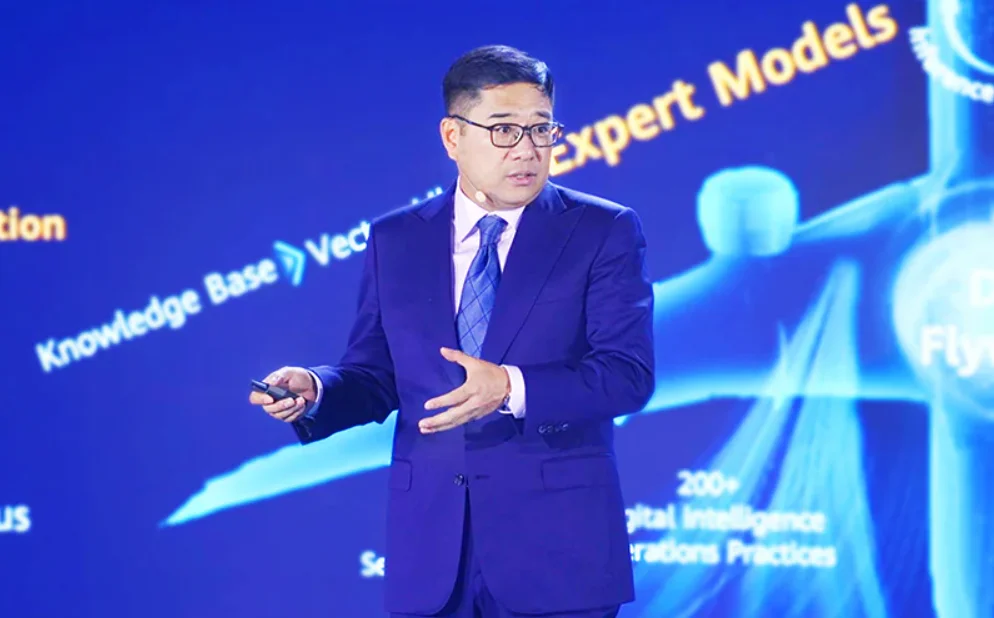Huawei is revolutionizing telecommunications with AI and generative AI! Discover how these innovations tackle network complexity and boost efficiency in the ICT sector.
Get ready for a smarter, smoother, and more efficient digital world! Huawei has just announced some seriously cool advancements in how Artificial Intelligence (AI) and generative AI are being applied to telecommunications. This is a game-changer, especially as our networks—the backbone of our connected lives—become increasingly complex. Let’s break down what this means and why it’s so exciting.
The Challenge: Our Ever-Growing Network Maze
Think about all the ways you connect to the internet and communicate. You’ve got your home Wi-Fi (fixed network) and your smartphone data (mobile network). Now, multiply that by billions of users and devices, all demanding seamless, high-speed connectivity for everything from streaming movies to powering complex business operations and the Internet of Things (IoT).
Managing these “converged” fixed and mobile networks is a Herculean task. It’s like trying to conduct a massive, constantly changing orchestra where every instrument needs to play in perfect harmony. This complexity can lead to inefficiencies and make it harder to deliver the flawless service we’ve all come to expect.
Huawei’s AI to the Rescue: Smarter Networks, Simpler Management
This is where Huawei’s new AI and generative AI solutions come into play. They are designed to bring a new level of intelligence to how telecommunication networks are operated and managed, significantly boosting operational efficiency within the Information and Communications Technology (ICT) sector.
What’s the “AI” and “Generative AI” magic here?
- AI for Operations (AIOps): Traditional AI and machine learning can analyze vast amounts of network data to predict and prevent problems before they even happen. Think of it as having a super-smart engineer constantly monitoring the network, identifying potential issues like a slowdown in a specific area, and automatically rerouting traffic or adjusting resources to keep things running smoothly. This proactive approach can dramatically reduce downtime and improve the user experience. For instance, Huawei is already collaborating with China Mobile to use AI agents for tasks like managing transport networks and handling core network faults.
- Generative AI’s Creative Spark: Generative AI, the same kind of AI that can create text, images, and even code, has exciting applications in telecom too. Huawei’s research indicates that new generative AI models like DeepSeek can be applied to telecom infrastructure for tasks like domain knowledge construction, code generation, data analysis, and intelligent ticket processing for customer support. This could mean faster resolution of customer issues, more intuitive network management interfaces, and even the automated creation of new network services. China Telecom, for example, is working with Huawei to deploy their Fault Management and Engineering (FME) Mate, which uses a telecom foundation model trained with network data to manage errors.
Huawei is also focusing on “Optical + AI,” promoting the deployment of all-optical networks to power various industries with inclusive AI, recognizing that the rapid iteration of AI foundation models requires higher network performance.
Why This Matters: The “So What?” Factor
These advancements aren’t just tech for tech’s sake. They have real-world implications:
- For You, the User: Expect more reliable connections, faster speeds, and quicker resolution of any network issues. As AI helps optimize networks, your streaming, gaming, and browsing experiences should become even smoother.
- For Businesses: Companies relying on robust connectivity (which is pretty much all of them these days!) will benefit from more stable and efficient networks. This can translate to increased productivity and better customer service.
- For the Telecom Industry: Operators can manage their complex networks more effectively, reduce operational costs, and free up human engineers to focus on innovation rather than routine maintenance. Huawei foresees a transition from traditional telecom companies (telcos) to technology companies (techcos) through these AI-driven upgrades.
- Paving the Way for Future Tech: As we move towards even more demanding technologies like advanced 5G (or 5.5G/5G-Advanced as Huawei terms it) and the metaverse, AI-powered networks will be essential to handle the massive data loads and ultra-low latency requirements. Huawei believes that 6G must also embrace the ‘AI revolution’ to be successful.
At MWC Barcelona 2025, Huawei launched the industry’s first AI Core Network, aiming for an autonomous generative network capable of self-optimization and self-O&M (Operations and Maintenance).
In a Nutshell: AI is Making Our Networks Genius-Level
- The Problem: Managing today’s converged fixed and mobile networks is incredibly complex.
- Huawei’s Solution: Leveraging AI and generative AI to make network operations smarter and more efficient.
- Key Benefits: Improved network reliability, faster speeds, reduced operational costs for telcos, and a better experience for users.
- The Big Picture: This is a crucial step in building the intelligent infrastructure needed for future technologies.
Looking Ahead: The AI-Powered Telecom Future
Huawei’s commitment to integrating AI into the core of telecommunications is a clear signal of where the industry is heading. As AI capabilities continue to evolve, we can expect even more sophisticated applications that will transform how our networks operate. While there will undoubtedly be challenges in implementing these advanced systems and ensuring aspects like data privacy and security, the potential benefits are immense.
The journey towards fully autonomous, self-healing, and incredibly efficient networks is well underway, and AI is firmly in the driver’s seat.
What are your thoughts on AI’s role in shaping the future of telecommunications? Are you excited about the prospect of smarter networks? Let us know in the comments below, and don’t forget to follow “24 AI News” for more insights into the amazing world of artificial intelligence!










